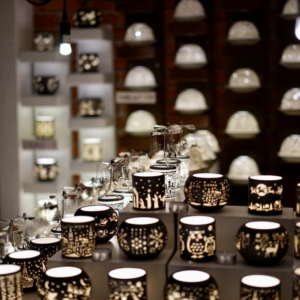Have you ever wondered about the hidden ingredients in everyday products? From the glossy pages of
your favorite magazine to the smooth finish on your car, there’s a secret component that’s revolutionizing
industries worldwide: kaolin clay.
This versatile mineral, often overlooked, is becoming increasingly vital in our modern world. As global
demand surges, kaolin clay is no longer just a ceramic artist’s best friend—it’s a game-changer in
industries ranging from paper production to pharmaceuticals. But what’s driving this sudden interest, and
how is it reshaping markets across the globe?
Join us as we delve into the fascinating world of kaolin clay, exploring its diverse applications, current
market trends, and the factors propelling its demand to new heights. We’ll uncover why this unassuming
white powder is capturing the attention of manufacturers and investors alike, and what the future holds
for this indispensable resource. Get ready to discover how kaolin clay is silently shaping our world, one
industry at a time.

Understanding Kaolin Clay
A. Definition and composition
Kaolin clay, also known as China clay, is a fine, soft white mineral primarily composed of kaolinite. This
hydrated aluminum silicate mineral has a chemical formula of Al₂Si₂O₅(OH)₄. Kaolin clay formations
typically result from the weathering of aluminum-rich minerals like feldspar over millions of years.
B. Key properties and characteristics
Kaolin clay possesses several unique properties that make it valuable across various industries:
- Whiteness and brightness
- Fine particle size
- Low conductivity of heat and electricity
- Chemical inertness
- Low abrasiveness
- High opacity
- Plasticity when wet

C. Major sources and deposits worldwide
Kaolin clay deposits are found globally, with significant concentrations in:
1. United States (Georgia, South Carolina)
2. Brazil
3. China
4. United Kingdom (Cornwall)
5. Germany
6. Ukraine
7. Australia
These deposits vary in quality and composition, influencing their suitability for different applications. The
Georgia kaolin belt in the United States is particularly renowned for its high-quality deposits, supplying a
substantial portion of the global market
.
Regional Market Analysis
Now that we understand the nature of kaolin clay, let’s examine how its distribution affects regional markets and global demand patterns.
Current Global Market Landscape
Market Size and Growth Projections
The global kaolin clay market has shown consistent growth in recent years, with a projected CAGR of
4.5% from 2021 to 2026. By 2026, the market is expected to reach a value of $5.8 billion. This growth is
primarily driven by increasing demand in various industries, including paper, ceramics, and paints.
Leading Producers and Exporters
The kaolin clay market is dominated by a few key players:
1. United States
2. China
3. Germany
4. United Kingdom
5. Brazil

Key Importing Countries
The major importing countries for kaolin clay include:
Japan
South Korea
Italy
India
Mexico
These countries have significant demand for kaolin in their manufacturing sectors, particularly in
ceramics and paper production.
Price Trends and Factors Influencing Costs
Kaolin clay prices have experienced moderate fluctuations in recent years. Factors affecting costs
include:
- Energy prices
- Transportation costs
- Mining regulations
- Supply chain disruptions
The average price of kaolin clay has increased by 3% annually over the past five years, with premium
grades commanding higher prices due to their superior quality and limited availability.

Industry Applications Driving Demand
The versatility of kaolin clay has led to its widespread use across various industries, driving global
market demand. Let’s explore the key sectors where kaolin plays a crucial role:
A. Paper and pulp industry usage
Kaolin clay is extensively used in the paper and pulp industry as a filler and coating material. Its unique
properties enhance paper quality, improving opacity, brightness, and printability.
B. Ceramics and refractory materials
In the ceramics industry, kaolin serves as a primary raw material for producing porcelain, bone china,
and other fine ceramics. Its high fusion point and low shrinkage make it ideal for refractory applications.
C. Paint and coatings sector
Kaolin’s white color and fine particle size make it an excellent pigment extender in paints and coatings. It
enhances durability, improves coverage, and reduces production costs.
D. Rubber and plastic applications
The rubber and plastic industries utilize kaolin as a reinforcing filler, improving mechanical properties and
reducing production costs.
E. Pharmaceutical and cosmetic uses
Kaolin’s absorbent properties and inert nature make it valuable in pharmaceuticals and cosmetics, where
it’s used in products like medications, skincare items, and makeup.

These diverse applications underscore kaolin’s importance across industries, driving its global demand.
Next, we’ll examine how these applications influence regional market dynamics

Regional Market Analysis
The global kaolin clay market exhibits distinct regional patterns, each influenced by local industries,
economic conditions, and geological availability. Let’s examine the key regions:
A. North America
North America, particularly the United States, is a significant player in the kaolin market. The region’s
demand is primarily driven by:
- Paper and packaging industries
- Ceramics and sanitaryware manufacturing
- Growing construction sect

B. Europe
Europe’s kaolin market is characterized by:
- Mature paper and ceramics industries
- Increasing focus on sustainable and eco-friendly products
- Growing demand in pharmaceutical and cosmetic sectors
C. Asia-Pacific
The Asia-Pacific region is the fastest-growing market for kaolin clay, driven by:
- Rapid industrialization in China and India
- Booming construction industry
- Expanding paper and packaging sector
D. Latin America
Latin America’s kaolin market is primarily influenced by:
- Rich kaolin deposits in Brazil
- Growing ceramics and sanitaryware industry
- Increasing exports to North America and Europe
E. Middle East and Africa
The Middle East and Africa region shows promising growth potential due to:
- Expanding construction sector in Gulf countries
- Increasing investments in infrastructure development
- Growing demand for kaolin in the ceramics industry
As we delve deeper into the factors influencing global demand, it’s crucial to understand how these
regional dynamics shape the overall kaolin clay market landscape

Factors Influencing Global Demand
The global demand for kaolin clay is shaped by several key factors, each playing a crucial role in the
industry’s dynamics. Let’s explore these influential elements:
A. Technological advancements in mining and processing
Recent innovations have revolutionized kaolin extraction and refinement:
- Improved extraction techniques
- Advanced processing methods
- Enhanced quality control systems
These advancements have led to:
1. Increased production efficiency
2. Higher-quality kaolin products
3. Reduced environmental impact

B. Sustainability concerns and environmental regulations
Environmental factors significantly impact the kaolin industry:
- Stricter regulations on mining practices
- Growing demand for eco-friendly products
- Emphasis on sustainable resource managemen
C. Economic growth in developing countries
Emerging markets play a vital role in shaping kaolin demand:
1. Rapid industrialization in Asia-Pacific regions
2. Increasing construction activities in developing nations
3. Growing middle-class populations driving consumer goods demand
D. Substitutes and alternatives
The availability of alternative materials affects kaolin’s market position:
- Calcium carbonate as a paper coating substitute
- Synthetic materials in ceramics and plastics
- Recycled materials in various applications
These factors collectively influence the global demand for kaolin clay, creating both challenges and
opportunities for industrby players. As we move forward, understanding these dynamics will be crucial for
stakeholders to navigate the evolving kaolin market landscape effectively

Future Outlook and Opportunities
Emerging Applications and Niche Markets
The kaolin clay industry is poised for growth as new applications emerge across various sectors. From
advanced ceramics to nanotechnology, kaolin’s versatility is opening doors to niche markets. One
particularly promising area is the use of kaolin in 3D printing materials, where its fine particle size and
high purity contribute to improved print quality and strength.
Potential for Recycling and Circular Economy
As sustainability becomes a global priority, the kaolin industry is exploring recycling opportunities. Here’s
a look at potential recycling methods:


Innovation in Product Development
Ongoing research is driving innovation in kaolin-based products. Key areas of development include:
- Functionalized kaolin for advanced coatings
- Kaolin-polymer nanocomposites for lightweight materials
- Kaolin-based catalysts for cleaner industrial processes
Market Consolidation and Strategic Partnerships
The kaolin industry is witnessing a trend towards consolidation, with larger companies acquiring smaller,
specialized producers. Strategic partnerships between kaolin suppliers and end-users are becoming
more common, fostering innovation and ensuring stable supply chains. These collaborations are likely to
shape the future landscape of the global kaolin market, driving efficiency and technological advancements

The global market for kaolin clay continues to exhibit robust growth, driven by its diverse applications
across industries. From paper and ceramics to cosmetics and pharmaceuticals, kaolin’s versatility makes
it a sought-after mineral worldwide. Regional market dynamics, technological advancements, and
shifting consumer preferences all play crucial roles in shaping the industry’s landscape.
As we look to the future, the kaolin clay market presents both challenges and opportunities. Sustainable
mining practices, product innovation, and emerging markets offer potential avenues for growth. Industry
players who can adapt to changing regulations, invest in research and development, and capitalize on
new applications will be well-positioned to thrive in this evolving market. By staying informed about
global trends and leveraging kaolin’s unique properties, businesses can tap into the ongoing demand for
this valuable mineral resource
.



Add a Comment